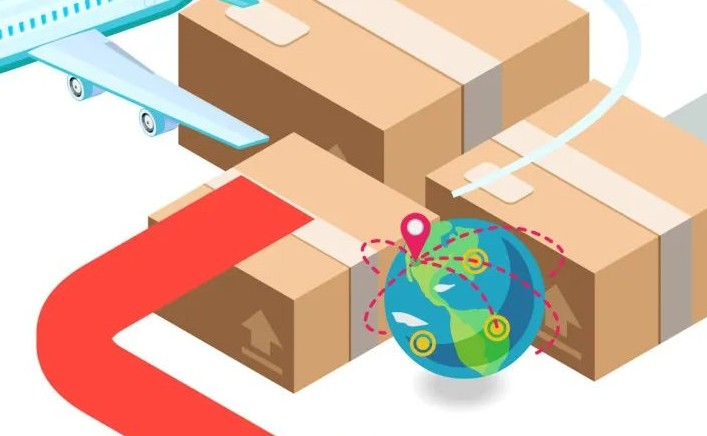In today’s globalized business landscape, cross – border e – commerce platforms are booming. Among the numerous factors contributing to their success, multilingual support stands out as a crucial element. It not only serves as a bridge connecting consumers from different countries and regions but also plays a pivotal role in enhancing user experience and expanding market share.

I. The Significance of Multilingual Support in Cross – Border E – commerce Platforms
A. Enhanced User Experience
- Easier Shopping Process
- When cross – border e – commerce platforms offer multilingual support, consumers can browse products, view details, and complete transactions in their native languages. For instance, a German consumer accessing an American cross – border e – commerce platform will find it much easier to understand product descriptions, specifications, and the purchasing process if the platform provides a German interface. This eliminates the need for them to struggle with translation or make guesses, significantly improving the convenience and comfort of shopping.
- Efficient Customer Service
- Multilingual customer service support further elevates the user experience. When consumers encounter problems during the shopping process, they can communicate with customer service representatives in their mother tongue and receive accurate answers and assistance promptly. This makes consumers feel cared for and valued by the platform, thus enhancing their favorability and loyalty towards it.
B. Expanded Market Reach
- Breaking Language Barriers
- Consumers in different countries and regions speak various languages. By providing multilingual services, cross – border e – commerce platforms can break down language barriers and attract more non – native – speaking consumers. For example, an e – commerce platform that was originally mainly in English can quickly penetrate the Latin American and Middle Eastern markets and reach hundreds of millions of potential customers by adding languages like Spanish and Arabic.
- Cultural Adaptation
- Multilingual support helps platforms adapt to local market cultures. Besides the language itself, platforms can adjust product displays, promotional activities, and other content according to the cultural characteristics of different language regions. This better meets the needs of local consumers and enables the platform to gain a firm foothold in the local market.
II. Challenges in Implementing Multilingual Support for Cross – Border E – commerce Platforms
A. Language Diversity and Complexity
- Vast Language Varieties
- There are numerous languages in the world, each with its unique grammar, vocabulary, and expressions. Cross – border e – commerce platforms that aim to cover multiple markets need to handle a large amount of content in different languages. For example, languages like Chinese, Japanese, and Korean have significant differences in grammatical structures compared to Indo – European languages, making accurate translation and localization more difficult.
- Regional Dialects and Idiomatic Expressions
- Even for the same language, there may be differences in dialects, idiomatic expressions, etc. in different regions. For instance, English has different usages and expressions in the UK, the US, Australia, and other countries, which adds to the complexity of language support.

B. Cost and Resource Investment
- Human Resources
- Providing multilingual support requires a substantial investment of human, material, and financial resources. Firstly, professional translators need to be hired to ensure translation quality. These translators should not only be proficient in the target languages but also have knowledge of relevant industries. Secondly, translating and maintaining multilingual content, including website interfaces, product descriptions, and marketing copy, takes a great deal of time and effort.
- Technical Resources
- In addition to human costs, technical resources are needed to build and maintain multilingual systems. This includes the development and optimization of translation management software and language – switching functions, posing high requirements for the platform’s technical capabilities.
III. Strategies to Address the Challenges of Multilingual Support for Cross – Border E – commerce Platforms
A. Build a Professional Translation Team or Cooperative Mechanism
- Internal Translation Team
- Cross – border e – commerce platforms can form an in – house professional translation team consisting of translators whose mother tongue is the target language and who are familiar with the e – commerce industry. These translators can accurately convey product information while taking into account cultural differences, making the translated content more appealing to local consumers. For example, when targeting the Japanese market, hiring native Japanese translators who understand Japanese e – commerce consumption habits ensures the accuracy and localization of translations.
- Collaboration with Translation Agencies
- Platforms can also cooperate with professional translation agencies. These agencies usually have rich translation resources and experience and can quickly and efficiently complete large – scale translation tasks. By collaborating with translation agencies, platforms can flexibly meet the translation demands brought about by business growth.
B. Leverage Technological Tools for Efficiency
- Translation Management Systems (TMS)
- By using a translation management system (TMS), cross – border e – commerce platforms can automate and optimize the translation process. TMS can store and manage translation memory, eliminating the need to translate repetitive content, thus greatly improving translation efficiency. Moreover, TMS enables multi – person collaborative translation, facilitating team management and quality control.
- Machine Translation as an Aid
- Machine translation technology can also be used as an auxiliary means. Although machine translation cannot completely replace human translation at present, it can save time and cost in some scenarios, such as quickly obtaining approximate translations or handling simple texts. Platforms can use machine translation for preliminary translation and then have it proofread and optimized by humans, improving overall work efficiency.
C. User Feedback and Continuous Improvement
- Encourage User Feedback
- Platforms should encourage users to provide feedback on multilingual content. Problems such as translation errors or unclear expressions found by users during use can help the platform make timely improvements. For example, setting up feedback channels on the platform allows users to easily submit language – related issues and suggestions.
- Regular Review and Update
- Based on user feedback, platforms should regularly review and update multilingual content. As market demands, product features, and language usage habits change, translation content should be adjusted in a timely manner to ensure its accuracy, clarity, and relevance to user needs.

In conclusion, multilingual support is one of the key factors for cross – border e – commerce platforms to succeed in the global market. Despite facing numerous challenges, through reasonable strategies and continuous efforts, platforms can effectively address them, provide high – quality services to consumers of different languages, and achieve sustainable business growth and market expansion.



